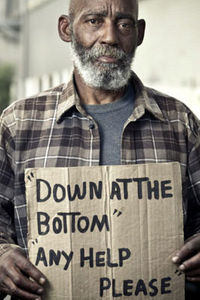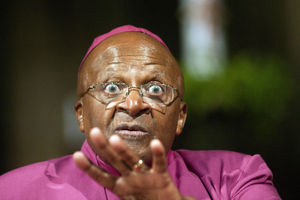Moreover, J.H. Both the high school and the seminary system were unashamedly elitist after their own fashion. It should also be noted that the rivalry between the two religious groups fitted well into the traditional factionalism of court life. A study of Social Change and Sectarian Withdrawal in the Balokole Revival, Columbia University Ph.D., 1975, unpublished. J. M. Waliggo, The Catholic Church in the Buddu Province of Uganda 1879-1925, unpublished Ph.D. thesis, Cambridge, 1976. The Muslims proceeded to establish a Muslim state. A Century of Trials and Blessings, Kampala, 1978. For the Catholics, the White Fathers naturally extended their work to include Kigezi, and the Verona Fathers to include West Nile. With the failure of D.P. But, at the same time the Protestant-Catholic antagonism was hardening into party political division along religious lines. For the rest, there was never any alternative to Luganda, and this applied even to the non-Bantu Iteso and Jopadhola. The chance of immediate baptism was largely responsible for the rapid growth of the movement, which consequently acquired the nickname Diini ya Layisi (religion on the cheap). One interesting offshoot of the Bamalaki was begun in the Mbale area by Semei Kakungulu, who had a natural sympathy for Kate in his quarrels with Apollo Kaggwa. This marked the beginning of the end of direct Kiganda influence. Hannington had not been heading an invading armyon the way up from the coast his caravan had been ridiculed for its puny size. But if the Buganda were so receptive to the message of a world-religion, why did they not simply remain with Islam? Conversely, it has also been argued that these Christians were rebels against the Kabaka, unwitting tools of foreign imperialism. For a time it seemed as if the movement might break away from the Church. But Christianity also played a very complex and at times divisive role, helping to aggravate old tensions and create new ones. 125-36. M. Wright, Buganda in the Heroic Age, London, 1971. Mwanga succeeded his father in October 1884. Byabazaire, The Contribution of the Christian Churches to the Development of Western Uganda 1894-1974, Frankfort am. The frustrations and animosities caused by these events found expression in conflict within the Church of Uganda. The deaths of these Christians must be put in the context of the traditional precariousness of life at court, and the deeply ingrained habits of obedience which made Baganda generally face death philosophically if the Kabaka so wished. 2. CMS, as the original promoter of cotton production in Uganda, closely identified itself with the basic aims of colonial economic policy, stressing its benign rather than its exploitative aspects. It was the 19th Century creation of his grandfather, a dissident Munyoro prince, and lacked a strong local root.
21. A key figure was a Muganda, Simeoni Nsibambi, who formed a strong spiritual bond with a young medical doctor of the CMS Ruanda Mission, Joe Church. But here the primary aim was to build up a self-contained, economically viable Christian Community (it bas been called feudalistic) rather than to promote directly the colonial economy.
Nevertheless a moderate group did emerge there too. M. Twaddle, Was the Democratic Party a Confessional Party? in Fashole-Luke op. brick making). The withdrawal did not mean an end to Catholic activity in Bugandathe pages continued to meet and an increasing number of neophytes were taught. In any case he was not the ruler of the whole of Acoli. For a biography of Kakungulu see H.B. They circumcised their Kabaka, Kalema, and called him sheikh. Lango had no traditions of chiefs of any kind; and the colonial-imposed chiefs had no traditional authority. The arrival or Christian missionaries, 1877 [3].
S. Kermu, The Life and Times of Bishop Silvanus Wani, presented to ATIEA as a research paer for the BD, 1987. The success of Ugandan Catholicism should not be measured only by the steady stream of priestly vocations. For the rivalry between Mackay and Lourdel, see Mackay of Uganda, By his Sister, London, 1898; and K. Ward, Catholic-Protestant Relations in Uganda: An Historical Perspective, in African Theological Journal, Makumira, Tanzania, 1984. 171-182; and F.X. It is quite conceivable that had Lugard found the Muslims in control of Buganda in 1890 he would have tried to work with themin which case Buganda might have become a Muslim state! The concept of a Christian Revolution is discussed in: C. Wrigley, The Christian Revolution in Buganda, Comparative Studies in Society and History, II, l, 1959, pp. F.B. grew slowly and has remained a small but respectable Church. They might well have regained control if it had not been for intrusion at this point of an external factor in the form of Captain Lugard and the Imperial British East Africa Company (IBEAC). Paradoxically, although Christianity in western Uganda early threw off tutelage from Buganda, Christianity did nevertheless develop a long line first worked out in Buganda. At first the government was more than content to leave education to the missions. ln the event the authorities were right to be suspicious by the 1890s the CMS missionaries were openly advocating a British takeover of Uganda; though this is not to say that they had been conscious agents of imperialism in the 1880s. The practice of redeeming slaves to provide a nucleus of Christianity was still a major element of their mission strategy in Buganda and this may be a sufficient explanation of their withdrawal to the moral haven of Bukumbi, south of the lake. Thus, in a society already open to new ideas, responsive to the technological, cultural and religious influence of the outside world, first Islam and then Christianity made an impact on Buganda in the second half of the 19th Century. In the era of Yoweri Museveni and the National Resistance Movement, Christianity remains at the centre of Uganda society, both as a problem to be overcome; and as an essential contributor to fundamental change. In fact, the Roman Catholic Mill Hill Mission was known as the mission ekitalya bwami the mission which doesnt eat (i.e. cil. Joe Church, The Quest for the Highest, London, 1979. Mwanga seems to have lacked strong religious convictionshe was a skeptic in an age of faith. political office) among themselves alone, on the basis of the winner takes all. Christianity struck deep roots in western Uganda. Buganda increased its territory at the expense particularly of Bunyoro, which was severely punished for Omukama Kabalegas heroic but in the end futile resistance.
H.P. By 1914 only three areas of Uganda were practically untouched by missionary work: West Nile, Kigezi and Karamoja. 19. Nevertheless, it was politically a mistake. The first Ugandan evangelists were Banyoro (where traditional links were strong) or Lwo who had spent time in Bunyoro such as the Alur Sira Dongo. But a new and greater threat to Bugandas independence quite suddenly emerged from the East African coast with the intrusion of German imperialism early in 1885. For Islam see, A. Kasozi, N. King & A. Oded, Islam and the Confluence of Religions in Uganda 1840-1966, Florida, 1973. C. Robbins, Tukutendereza, Columbia Ph.D., 1975 (unpublished). But this did not happen and by the 1950s the relationship between Church and Revival had become much more amicable. The young protestant martyrs, Makko Kakumba, Nuwa Serwanga and Yusuf Lugalama, were all members of the mission household. Kings College Budo was the apex of the whole system. In Ankole, colonialism accentuated traditional divisions between the bahima pastoralists (who constituted a kind of ruling class) and the majority bairu agriculturalists. Such stereotypes tended to be reinforced by the devastating effects of famine and sleeping sickness in the early years of the 20th Century. M.S.M. L. Pirouet, Black Evangelists, London, 1978. Christianity came to dominate the political arena of Buganda; and Islam was relegated to an under-privileged minority. C. Robbins, Tukutendereza.
For Muteesa it was not simply a matter of insubordination, serious as that was, but a confirmation of fears that Islam was becoming a politically subversive creed. But the Catholics also struggled to make an impact. It was a revolution with several phases: a revolution of the new dini (1888), a Muslim revolution (1888-9), a Christian counterrevolution (1889), a Protestant seizure of power (1892), and finally the consolidation of the revolutionary changes by the British take-over and loss of Bugandas sovereignty (1894/1900).
Any discussion of Christianity in Ugandathe creation of colonialism at the end of the 19th Centurymust begin with Bugandathe ancient independent kingdom on the northern shores of the lake which the Baganda call Nalubaale (the home of the balubaale gods) and which the British christened Victoria. Over the centuries Buganda had evolved a complex system of government under a Kabaka (king), a system unusual for its high degree of centralization and internal cohesiveness.
In Uganda, nationalism was complicated by the conflicting claims of Buganda nationalism and Ugandan nationalism. A History of Bishop Tucker Theological College 1913-1986 (unpublished, xeroxed commemorative booklet).
Nevertheless whatever the mission ideology, Catholic peasants were drawn into the colonial economic system along with everyone else. Revival was taken to northern Uganda by a Muganda doctor called Lubulwa, who had quarreled with Nagenda and the leadership of Revival in Buganda. In 1882 the White Fathers withdrew from Buganda altogether. But by 1892 the IBEAC was in imminent danger of bankruptcy. Kyewalyanga, Traditional Religious Custom and Christianity in Uganda, Freiburg, 1976. As we have seen, the loss of political power early on in the colonial era did not mean a decline in evangelistic zeal for the Catholics. 16. Y. Tourigny, So Abundant a Harvest, London, 1979. Christianity did not put down strong roots in the North. cit. Mwanga was deposed and exiled to Seychelles. to gain power in 1962, the Catholic Church was forced back into its pre-independence role as the church without political power. 4. In 1914 he and his clansman Malaki Mussajjakaawa broke away from the Anglican Church. Charles Lwanga, the Catholic head of the pages in the kings private apartments, had been particularly vigilant in protecting the Christian boys under his charge from the advances of the Kabaka and some of the chiefs.
Mujaju, The Political Crisis ofChurch Institutions in Uganda, Africa Affairs, Jan. 1976.. In this sense, Buganda, Islam, despite its rivalry, prepared the way for Christianity in a number of ways. 17.
Lugard, for his part, always insisted that he was neutral as far as religion was concerned.  The fact that these local orders flourished rested on the strong foundations of a solid Catholic piety at village level. For an important discussion of Kiganda traditional religion, see F.B. CMS missionaries were very conscious of the fact that they had preceded the administrators - had practically (invited) them to Uganda, in fact. Their position has if anything been strengthened. Christianity remained essentially a foreign imposition for many of the people of the area. J.V. The Agreement consolidated the dominant position of the Protestant oligarchy under Apollo Kaggwa, the Katikiro and one of the regents to the boy Kabaka Daudi Cwa.
The fact that these local orders flourished rested on the strong foundations of a solid Catholic piety at village level. For an important discussion of Kiganda traditional religion, see F.B. CMS missionaries were very conscious of the fact that they had preceded the administrators - had practically (invited) them to Uganda, in fact. Their position has if anything been strengthened. Christianity remained essentially a foreign imposition for many of the people of the area. J.V. The Agreement consolidated the dominant position of the Protestant oligarchy under Apollo Kaggwa, the Katikiro and one of the regents to the boy Kabaka Daudi Cwa.
The Anglicans, reversing their policy, embarked on a Lunyoro-Lutoro translation of the Bible and Prayer Book. ln the 1960s the survivors of Kakungulus Jews were given help from orthodox Jewish communities in Israel, but Amins anti-Zionist stance after 1972 put an end both to this incipient collaboration and the Bayudaya as a viable community. And the basic thought patterns and practices of Kiganda religion remain strong to this day. But with Amins seizure of power in 1971, the disintegration of the economy and of social services, the demise of political parties, the judiciary and the press, the insecurity of life and property, so the Church increased in importance, a refuge in times of trouble, a sign of hope. Within the narrow constraints of a colonial and racially stratified society, they favored the development of small scale African capitalism in agriculture and trade; and so encouraged the growth of a fragile petite bourgeoisie. The soldier and adventurer, Semei Kakungulu, a Protestant Muganda who had quarreled with Apollo Kaggwa, attempted to compensate for his political failure in Buganda, by carving out for himself a kingdom in eastern Uganda. In the wake of this sub-imperialism, and indeed part and parcel of it, went the missionary expansion of the Church of Baganda evangelists. 

